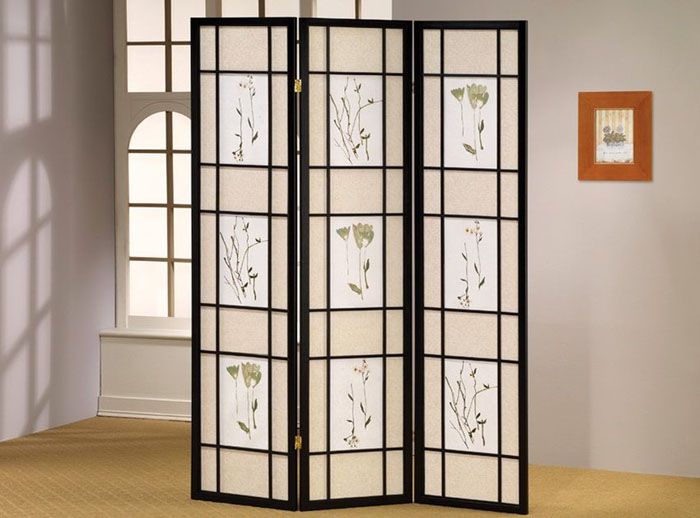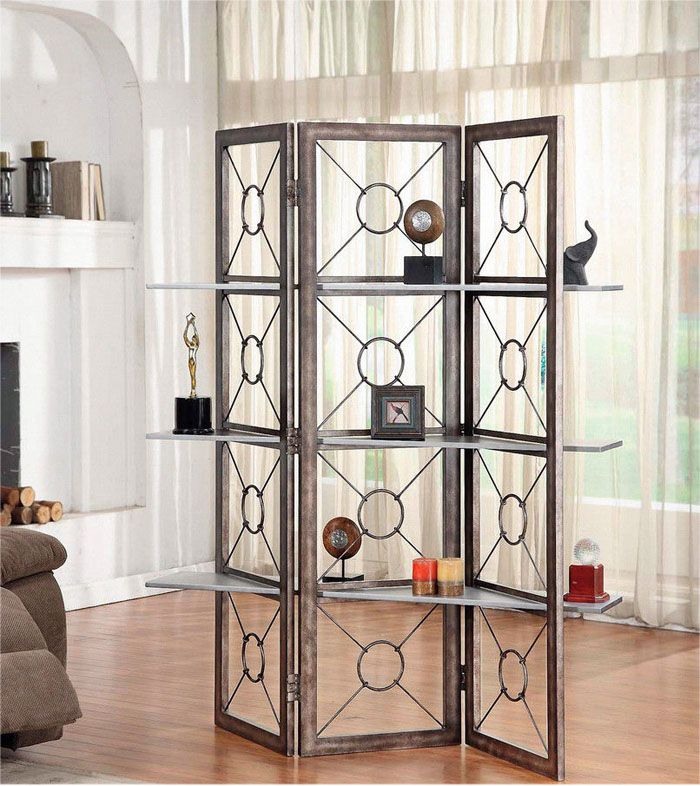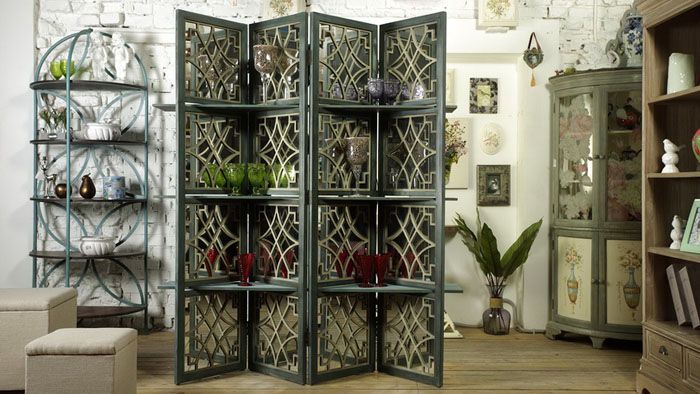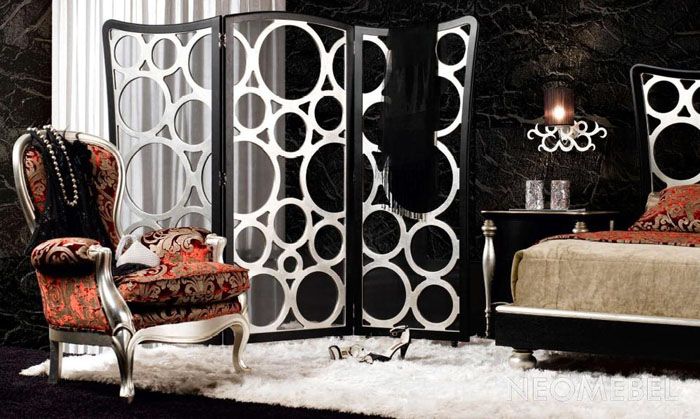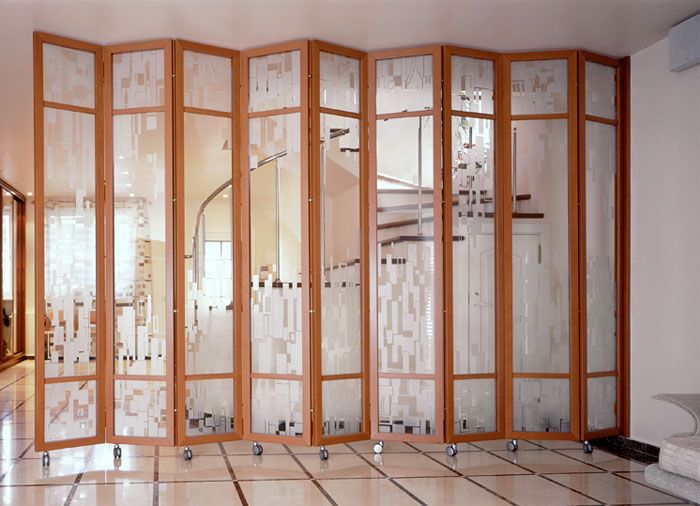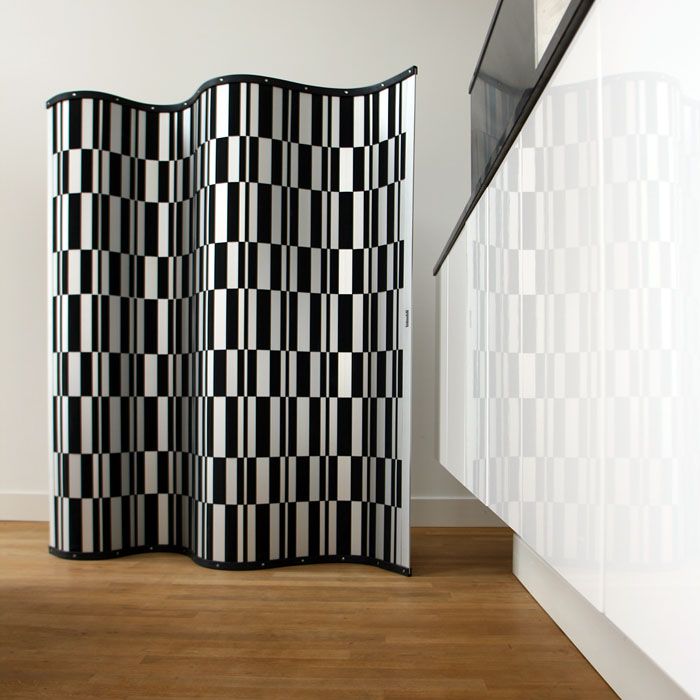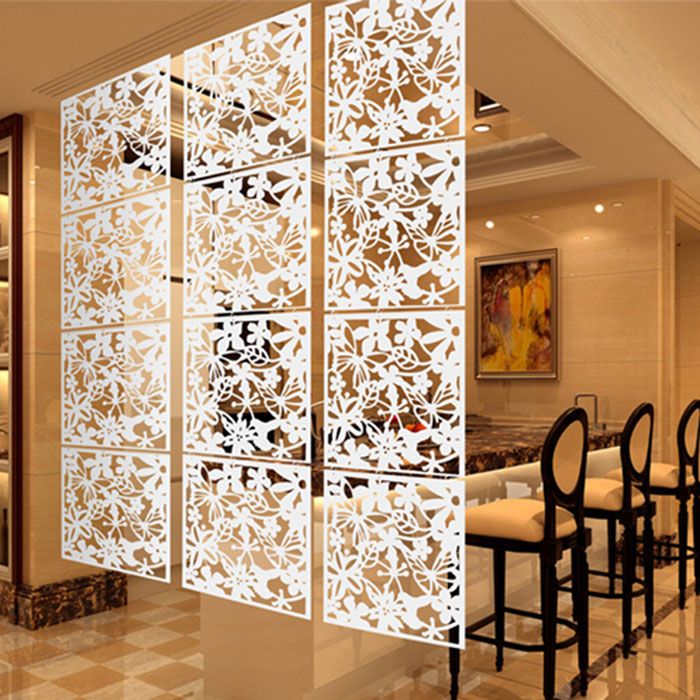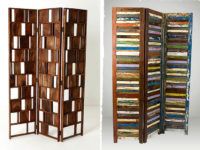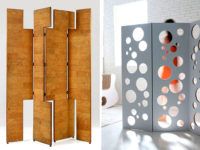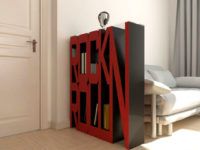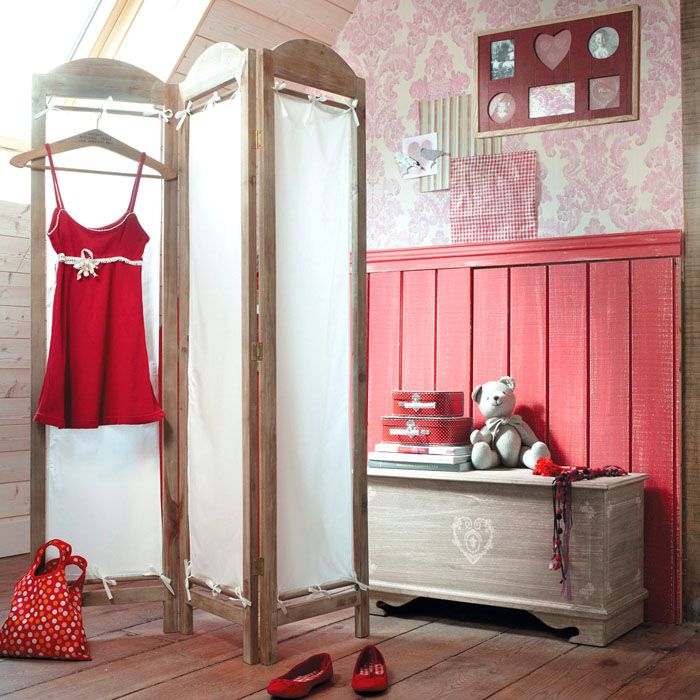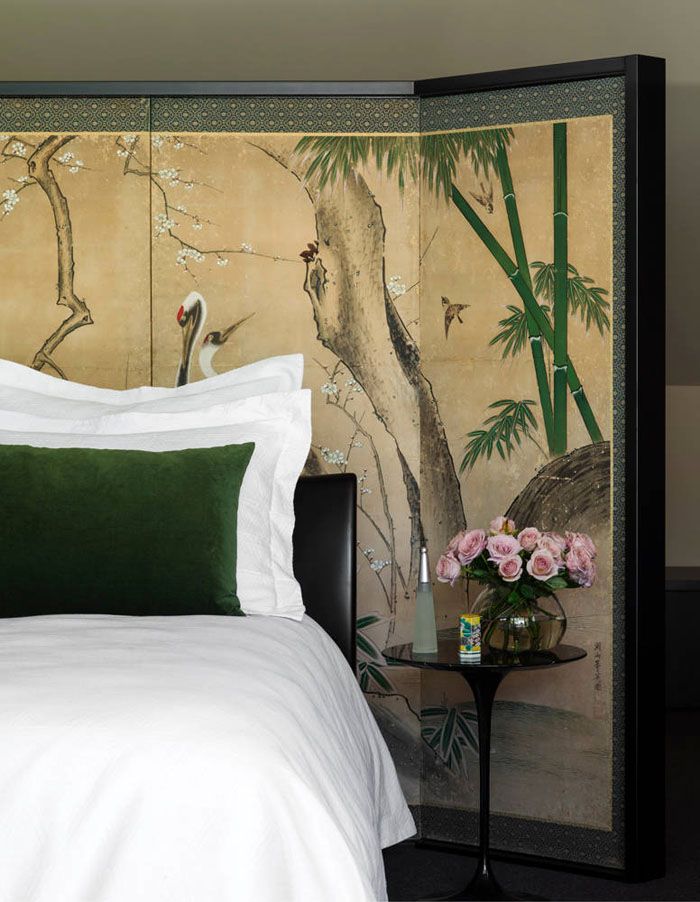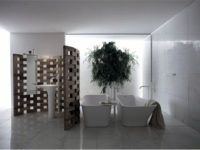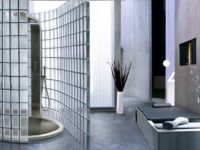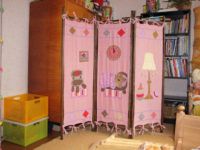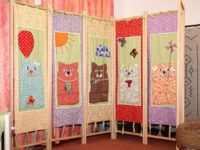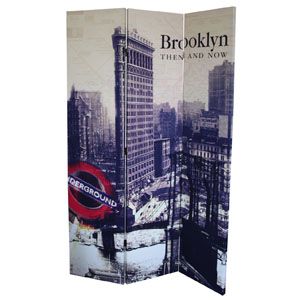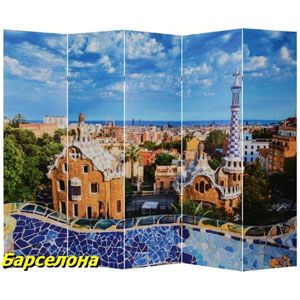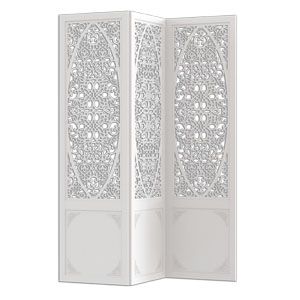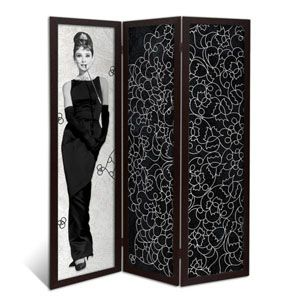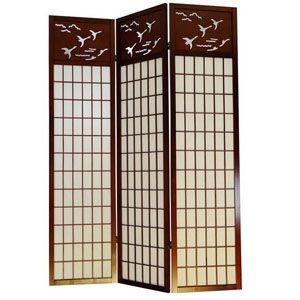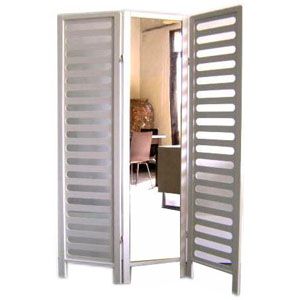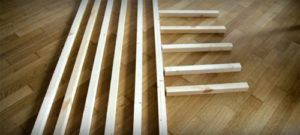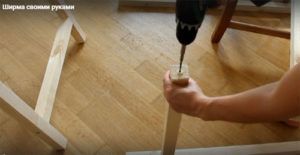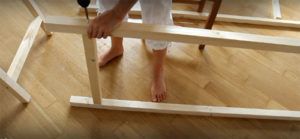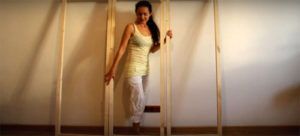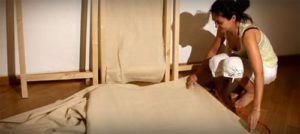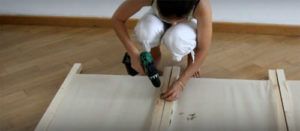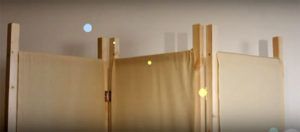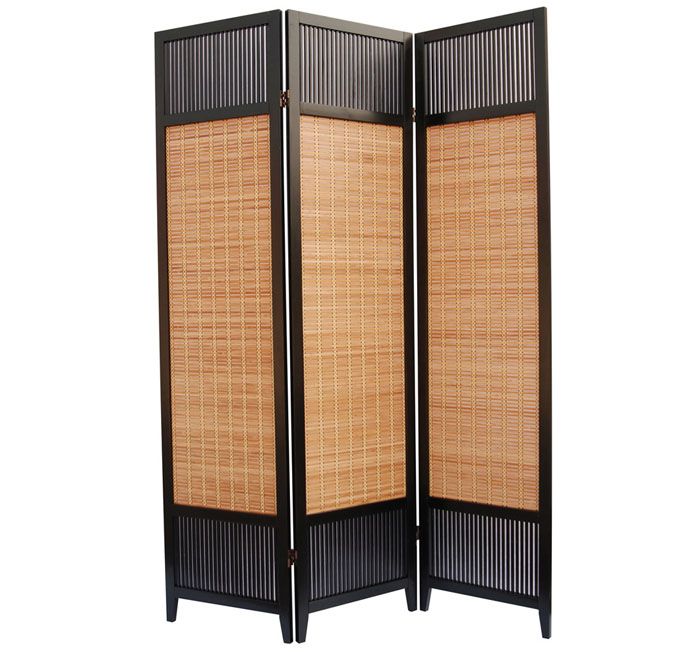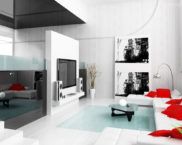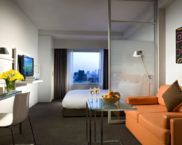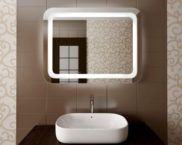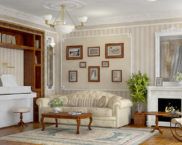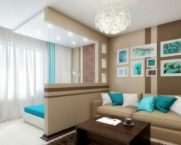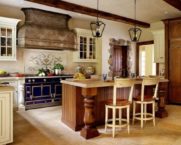What is a partition-screen for a room: varieties, models, prices and do-it-yourself manufacturing methods
A one-room apartment, which is at the same time a bedroom, a living room, and often a children's room, is not the most convenient option for living. But for many families, this is the only housing option. In order to somehow zone the space of one room, since ancient times they have used such a functional element as a partition-screen for a room. What it is, what positive qualities does it have, how you can use this design in the rooms of apartments and houses, will be discussed in this article.
The content of the article
- 1 What is a screen
- 2 The main advantages of screens for room zoning
- 3 Varieties of screens in the interior of the room
- 4 Appointment of screens-partitions in different rooms
- 5 How much and where can you buy room screens
- 6 How to make a screen for a room with your own hands
- 7 Video: decorative wooden partitions and screens for the room
What is a screen
Construction partitions - this is always a big financial cost, time spent on construction, dust and dirt in the house. And not every living space will allow you to build this type of element due to the small area. In this regard, the screen is the best option, because it is a portable design, often folding, lightweight and multifunctional. Moreover, if you set a goal, then such a partition for zoning a room can become an interesting design object.
Purely structurally, a screen is a series of frames connected by hinges. A translucent or impermeable material is stretched inside them. And in this regard, there is a huge variety of materials used, with the help of which various design ideas can be realized.
If you look at the history of the appearance of the screen, it all began in China, where fabric was the material for covering the screens, then this element migrated to Japan, where paper was used to fill the structure. Already in Europe, they approached the design more diversified, using different materials. But the only element that hasn't changed for many years is the frames themselves.They were made from wooden slats.
In China and Japan, screens were installed inside the house in front of the entrance. So, Asians scared away evil spirits from their homes. At the same time, the Japanese decorated these structures with dragons, exotic animals and birds. We add that Japanese-style screens are still popular, but modern options are more versatile designs, and not just a partition in front of the entrance. There are several such screens in the photo below.
The main advantages of screens for room zoning
An interesting fact is that many people treat screens as elements that are not essential for them. That is, it is neither an architectural element, nor a piece of furniture. But this design has several advantages that make them so popular. Note that they are used not only in small apartments, they can be seen in large bedrooms, and in huge halls. Even in bathrooms, a screen is often installed, protecting the water treatment area from the changing room.
At the same time, screens are lightweight and folding structures. If they no longer need to be used, they are folded according to the type accordions and does not take up much space. Of course, it should be noted that not all partitions of this type are lightweight. Manufacturers today offer metal screens, which most often carry a purely design content. But there are models that are practical in terms of complete delineation of premises. Some metal structures are made of lightweight profiles, so they are light in weight and as light as traditional wood. But there are also massive models that are most often used as stationary and are rarely moved.
So, let's list again all the advantages of screens:
- minimum costs for the manufacture or purchase of a finished structure, which is incommensurate with the construction of a solid stationary partition;
- the ability to move it from room to room or change the zoning of one room at your discretion;
- a huge variety of style content, so choosing a room for the interior is not difficult;
- you can increase the functionality of the screen by providing it with shelves or pockets;
- choice by size and number of frames;
- the ability to choose from stationary models that are attached to the floor, wall or ceiling, and mobile;
- the ability to make a screen-partition for the room with your own hands.
Related article:
Partitions for zoning space in the room. In this review, we will consider the types of partitions and show examples of well-executed space division.
Varieties of screens in the interior of the room
When the conversation comes about the zoning of living quarters, accordion screens are often used for this. They are made from different materials, and this has already been mentioned above. But it should be noted that the assembled partition is not the only option. There is a fairly wide range of models, so we will consider each of them separately.
Folding partitions
This is a classic version - an accordion, consisting of several frame-sashes, connected by hinges. Usually, simple loops (piano or furniture) are used for this. The number of doors is limited only by the dimensions of the room, but traditionally there are three, maximum four of them in a screen of this design.

Most often, these screens are used as partitions. But today, designers offer various variations of the installation of partitions, where screens are often given a purely decorative interior filling.In the photo below, just such an option is shown.
Single screen partitions
This type of screens consists of one sash, so they have only one drawback - they cannot be folded. But this is not always a disadvantage, because such a design is flat, so it will not take up much space. On the other hand, single-screen partitions cope with their duties 100%.
They are convenient in that they create the illusion of a small wall, therefore they are very convenient when the task of zoning rooms is. We add that partitions of this type are very often used in office premises, which are divided into many workplaces. As for living rooms, here designers use them in different directions, but more often as a dividing element.
However, some models are used as stationary structures, others are used as portable. The latter are supplied with legs or wheels for ease of movement.
Flexible screens
From the name itself, it becomes clear that this variety differs in some way from the others, especially from the classical form in the form of frame-valves. In this model, the base is vertical posts, between which flexible material is stretched. The latter is located horizontally. That is why screens of this variety can take on bizarre shapes, they can be easily rolled up and removed.
Another type of flexible screens are vertically arranged elements, which are attached by hinges or flexible inserts to each other. There are no racks, the whole structure is narrow elements that are fixed on horizontal rails. The latter are themselves made of flexible material.
Screens-panels
This is a subtype of single screen models. Although some designers refer to them as a type of roller blinds that are suspended and attached to the ceiling. Not a bad option for bedrooms, because in this way you can separate the bed from the whole room with a thin fabric. Although, as practice shows, the panels are also hung in living rooms, separating the resting place from the working area.
As for the material from which the panels are made, the variety here is not very large. The main material is fabric (in principle, any), synthetic fabrics (mesh or solid). Sometimes designers even solve problems related to the bearing capacity of this type of screen. On them hang TV, paintings and other interior accessories.
Original designs
The popularity of screens is growing every year, and this is facilitated by their huge assortment in terms of a variety of shapes, sizes, materials and design ideas. The latter criterion has become the driving force in product advertising today. The original approach to the manufacture of partitions gave impetus to the emergence of a class of consumers who track new items and try to purchase them. In this case, not only the quality and originality of the design are taken into account, many are worried about the price aspect. Therefore, today buying a screen for a room inexpensively is not a problem.
So, a few photos of the original models:
Appointment of screens-partitions in different rooms
Everything is clear with the living rooms, this large screen room is divided into several zones for various purposes. In this regard, the other rooms are no different. But they also have specific features.
Bedroom screens
In this room, screens and partitions can be divided into two main positions:
- decorative;
- functional.
Let's start with the second one as the most used one. First of all, it is necessary to indicate that the partition in the bedroom is most often the division of space into two parts: a place for sleeping and changing clothes. And although such a partition is not always used for its intended purpose, it is always used as a hanger.A changing screen is one of the most common types of this design.
Decorative models are a kind of decor element. There is a huge variety of shapes and sizes, materials and designs. Usually these are panels-like screens inscribed in Interior Design premises. They are often installed behind the bed, giving a sense of the fullness of the room.
Bathroom screens
Here the conversation should be about bathrooms in private homes. It is impossible to install a screen in apartments, but there it does not belong, the room is too small. But if in the house bathroom - this is a large room, and besides, if the bath itself is installed in the middle, then the rest of the space must be fenced off from it.
Again, we need to make a reservation once again that in this article the conversation is not about protective structures that are installed on the bath in the form of glass or plastic partitions. Designs that zone space are considered here. Therefore, a few photos on this topic.
Screens in the children's room
In a children's room, lightweight partitions usually perform one function - they divide the room into play area and a bedroom. It is rarely when purely decorative functions are given to it, because in children's room mainly the walls are responsible for this.
The variety of design options is huge here. This is especially true for the design. Therefore, we will not argue for a long time how good screens look in the nursery. Just look at a few photos of how the screens fit into the space.
How much and where can you buy room screens
You can buy screens-partitions for different rooms today both in ordinary stores and on various Internet portals. Let's show in the table several models with prices.
How to make a screen for a room with your own hands
Consider a method of manufacturing a folding-type wooden partition-screen. To do this, you must first determine the size of the structure and select the number of leaves. Standard dimensions: height - 170 cm, width of one sash - 40 cm. The number of sashes is determined by the size of the enclosing space. As mentioned above, the classic version is 3 sashes.
As you can see, there is nothing complicated. The screen in the form of an accordion is assembled by hand from scrap materials. It took less than an hour.
How to make a Japanese screen with your own hands
In principle, the technology described above is the way to assemble Japanese screens. It's just that the Japanese have a screen - this is a structure in which the number of shutters is at least 6. Therefore, you will have to purchase more materials used.
Do not forget that traditional Japanese partitions, sliding or folding, for zoning space in a room are paper-covered structures. When the task is to make a screen with your own hands, you need to understand that such paper is expensive, and it is not always possible to find it in stores. Therefore, it is best to use a fabric with a Japanese ornament for drapery.
You can use straw tablecloths instead of fabric. They go on sale in rolls or already cut to fit certain table parameters. There are small straw napkins. They can also be used to decorate a Japanese screen. Mounting method - glue, metal staples and stapler, self-tapping screws with a decorative cap.
Summing up all of the above, it can be noted that the screen is an element of the interior, which not only carries certain functional features. With its help, you can emphasize the style of the room, make a special emphasis on the design. Therefore, it is worth taking a closer look at this kind of partitions.
If you have any questions regarding the analyzed topic, we are ready to listen to them in your comments. An exhaustive answer will be given for each answer.



